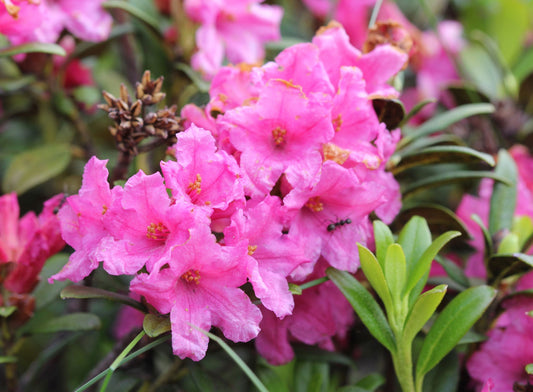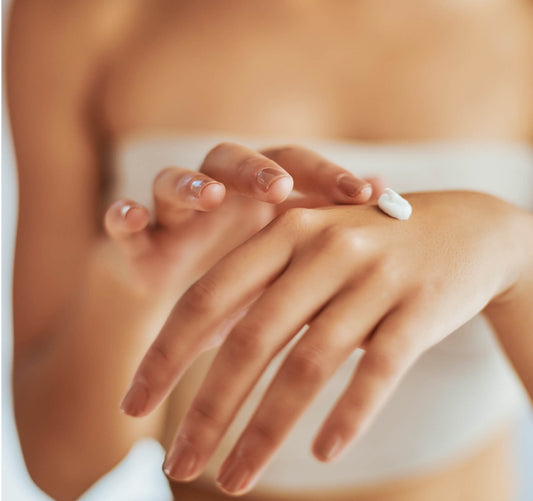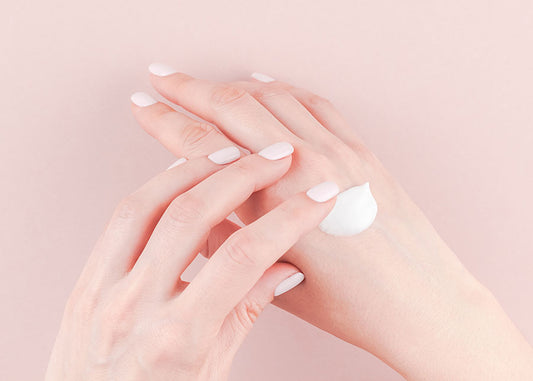All my life, I’ve been incredibly proud of my long, thick hair. Then it happened: Dark hairs on my pillow. My shower drain plugged with clumps of hair. My hair falling out in handfuls. The shine and volume was gone.
I was depressed. Was I going bald?
The reason for the demise of my crowning glory? Early menopause brought on by premature ovarian failure and extreme stress and PTSD.
It has been estimated that by the time we reach the age of 60, roughly 80 percent of women worldwide will be dealing with some degree of hair loss. So if this is happening to you, you are not alone, and there are solutions.
Reasons for Hair Loss
There are several kinds of hair loss in women: the most common is alopecia androgenica, known as female pattern baldness, which usually happens around the menopause. It is mostly a reaction to hormonal changes. Levels of the female hormones estrogen and progesterone fall during menopause, while testosterone sometimes rises. Stress also causes testosterone to convert to DHT - the highly active potent form and that can cause a male pattern balding which was what I had experienced. This is because cortisol increases 5 alpha reductase, and enzyme that helps convert testosterone to DHT These hormonal changes also affect our hair follicles, causing hair to thin all over our heads. Hair also becomes drier and duller as estrogen declines.
Another hormonal condition affecting hair loss is an underactive thyroid, which causes levels of the hormone thyroxine to fall. This confuses the immune system, and instead of attacking infections as it’s meant to do, it attacks the body’s own organs and tissues, including hair follicles. (For more information on thyroid hormones, go to my Couch Talk, Thyroid Health, with Dr. Alan Christianson.)
I get questions from so many women about hair loss, and I can relate totally to their concerns. Hair has enormous power over our psyche because it is an adornment, one of the main ways we make ourselves feel pretty. Hair enhances our beauty, affects how we view ourselves, and lets us make statements about our individuality.

So let’s get to the root of the matter. Here are some simple yet effective hair hacks if you’re in menopause – and losing it.
- See your doctor. Your first port of call should be your family doctor or gynecologist who may refer you to a dermatologist. He or she can give you a thorough check-up and give you a plan to manage the condition.
- Eat right to avoid the fallout. Hair loss can also be linked to lack of nutrients in the diet, including protein, zinc, and iron. I suggest following my Keto-Green Diet®. Among other foods, it supplies red meat for iron and protein, shellfish like oysters for zinc, and lots of green veggies for iron. Supplements can help fill in mineral gaps too.
- Pump up the omega-3s. A lack of the omega-3 fatty acids, needed for healthy cell membranes, can contribute to hair loss. Fish oils are the most common dietary sources of omega-3s, but vegetarians can supplement with flaxseed oil to prevent hair from becoming dry and brittle. I suggest that you supplement daily with Pura Omega Extreme. Eat plenty of fish high in omega-3s too, such as salmon. Try my delicious recipe for Salmon Cakes below.
- Take a thyroid supplement, along with thyroid-support minerals such as selenium and iodine. Eat two Brazil nuts nightly (which provide approximately 200 micrograms of selenium); and sushi or seaweed for natural iodine.
- Go herbal for good hair days. Although hormone replacement therapy (HRT) may help some women with hair loss, it doesn’t work for everyone. Instead, try supplementing with herbs that support hormone balance because they contain plant-based estrogens. These include black cohosh, ashwaganda, and chaste tree extract.
- Sip some green tea. A cup or two daily may put hair loss on the slow track. Green tea contains “catechins,” which inhibit an enzyme involved in converting testosterone to its follicle-killing form, dihydrotesterone (DHT). Green tea extract is also an ingredient in some hair care products. It can help strengthen damaged hair.
- Destress for your tresses. Stress can play a huge role in hair loss. When you’re stressed, your hair goes into its resting phase faster, in which it does not grow, and begins to fall out at a rate higher than average. For combatingcombatting the effects of stress on your hair, get plenty of B6 from spinach, salmon, and mackerel (all prominent foods on my Keto-Green Diet®. I also recommend taking a vitamin-B complex supplement to support your nervous system during stressful times and zinc to help block the conversion of testosterone to dht. (I cover more stress-reducers in my blog Are You As Overwhelmed As I Am Right Now?)
- Handle your strands with care. The average shampoo has more than fifteen chemicals in it, many of which disrupt our natural hormones. Don’t use shampoos with hair-harsh chemicals such as formaldehyde, sodium lauryl sulfate, ammonium laureth sulfate, and cocamide DEA, which dry the scalp and hair. Instead, choose products with hair-friendly botanicals like jojoba, rosemary, horsetail, sage, and chamomile. For a deep conditioner, massage avocado oil into your scalp. Let it sink in for 30 minutes, then rinse.
- Enjoy a professional blow-dry. This is purely a cosmetic hack, but one of my very favorite beauty indulgences in the world: a blow-out at a salon. This quick hair refresh creates fuller, thick-looking locks, plus makes you feel fabulous. A new color or cut can work wonders too.
A must-listen if your hair is falling out is my Couch Talk with Dr. Shel – How to Effectively Prevent Hair Loss in Women. And I have even more tips on a previous blog called Fix Your Hormones and Stop Losing Your Locks!
So forget about obsessing about your tresses, maintain a healthy lifestyle with these hacks, and keep your spirits up. That’s the strategy I adopted and my hair came back more luscious than ever. Yours will too!
Save your strands by eating a diet high in healthy fats. Salmon is a great protein choice because it’s packed with omega-3s that help keep your strands strong and your scalp moisturized. Enjoy this tasty salmon cakes recipe from The Hormone Fix, for a meal that’s great for your health and hair!

Salmon Cakes
Ingredients:
- Salmon, fresh or canned, 8 ounces
- 1 egg, beaten
- 2 stalks celery, minced
- 1 onion, minced
- 1/2 bunch cilantro, minced
- 1 tablespoon minced parsley
- 1/2 cup mayonnaise
- 1 teaspoon ground coriander
- 1 tablespoon fresh lemon juice
- 1 cup gluten-free bread crumbs
- 1 teaspoon sea salt
- 1/2 teaspoon white pepper
- 4 tablespoons butter, organic ghee, or coconut oil
Directions:
- If using fresh salmon, poach fish. Heat wine, water, and dill in a sauté pan and bring to simmer. Place salmon fillets skin side down in the pan. Cover and cook 5–10 minutes, or until fish flakes apart easily. Do not overcook. Remove from pan and let cool.
- Flake salmon into large chunks and place in medium-size mixing bowl. If using canned salmon, drain and flake salmon and place in a medium-size mixing bowl.
- Gently combine the fish with the egg, celery, onion, cilantro, parsley, mayonnaise, coriander, lemon juice, 1/2 cup breadcrumbs, salt, and pepper until mixture just clings together.
- Divide mixture into 8 portions and shape into fat, round cakes. Arrange on baking sheet lined with parchment paper; cover with plastic wrap and chill at least 30 minutes. (Can be refrigerated up to 24 hours.)
- Put remaining breadcrumbs on plate and lightly dredge cakes.
- Heat the oil in a skillet over medium-high heat. Gently lay fish cakes in skillet and pan-fry until outsides are crisp and browned, 3–4 minutes per side.
MAKES 4 SERVINGS
P.S. Speaking of healthy fats...
Pura Omega Extreme is packed full of healthy, hair boosting, fats specially formulated for fast absorption. It's a must have for anyone struggling with thinning hair - pick it up here!



